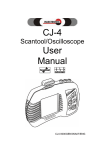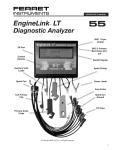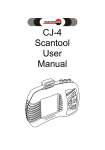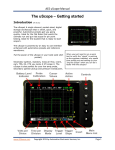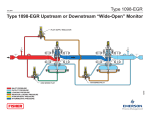Download Ford EGR Valves
Transcript
1234567890123456789012345678901212345678901234567890123456789012123456789012345678901234567890 1234567890123456789012345678901212345678901234567890123456789012123456789012345678901234567890 1234567890123456789012345678901212345678901234567890123456789012123456789012345678901234567890 1234567890123456789012345678901212345678901234567890123456789012123456789012345678901234567890 1234567890123456789012345678901212345678901234567890123456789012123456789012345678901234567890 1234567890123456789012345678901212345678901234567890123456789012123456789012345678901234567890 1234567890123456789012345678901212345678901234567890123456789012123456789012345678901234567890 1234567890123456789012345678901212345678901234567890123456789012123456789012345678901234567890 1234567890123456789012345678901212345678901234567890123456789012123456789012345678901234567890 1234567890123456789012345678901212345678901234567890123456789012123456789012345678901234567890 1234567890123456789012345678901212345678901234567890123456789012123456789012345678901234567890 1234567890123456789012345678901212345678901234567890123456789012123456789012345678901234567890 1234567890123456789012345678901212345678901234567890123456789012123456789012345678901234567890 1234567890123456789012345678901212345678901234567890123456789012123456789012345678901234567890 1234567890123456789012345678901212345678901234567890123456789012123456789012345678901234567890 1234567890123456789012345678901212345678901234567890123456789012123456789012345678901234567890 1234567890123456789012345678901212345678901234567890123456789012123456789012345678901234567890 1234567890123456789012345678901212345678901234567890123456789012123456789012345678901234567890 1234567890123456789012345678901212345678901234567890123456789012123456789012345678901234567890 1234567890123456789012345678901212345678901234567890123456789012123456789012345678901234567890 1234567890123456789012345678901212345678901234567890123456789012123456789012345678901234567890 1234567890123456789012345678901212345678901234567890123456789012123456789012345678901234567890 1234567890123456789012345678901212345678901234567890123456789012123456789012345678901234567890 TM TomcoTechtips ISSUE 32 rests on the pintle plate, or on the small metal button cap on some models (Fig. 1). As the OPERATING PARAMETERS EGR pintle moves upward, so does the pintle The PCM monitors the Manifold Absolute Pres- shaft of the EVP. This change in the EVP sure (MAP) Sensor, the Engine Coolant Tempera- position, changes the voltage signal to the PCM. ture (ECT) Sensor, the Throttle Position Sensor The PCM uses this voltage signal as a reference (TPS) and the EGR Valve Position Sensor (EVP) of EGR flow. EVP SENSOR VEHICLE EVP SENSOR CONNECTOR to calculate the correct amount of EGR flow HARNESS CONNECTOR EVP required. The PCM then sends the appropriate VREF VREF PIN A SIGNAL signals to the EGR control solenoid(s) so precise EVP SIGNAL PIN C SIG. RTN PIN B control of EGR can occur. FORD EGR VALVES SIG. RTN The PCM will not operate the EGR valve unless it sees: 1.The engine warmed up to normal operating temperature. 2.TPS at partial throttle. 3.TPS not at Wide Open Throttle (WOT). 4.MAP/MAF must be indicating light or moderate load. 5.A certain amount of computer clock time has to be elapsed. EVP The EVP is the feedback to the PCM of EGR position. The PCM monitors the EVP signal to see if the EGR valve is opened the desired amount. As stated, the tip of the EVP VREF 5V SIGNAL SIG. RTN PCM Spring Substrate assy. Housing assy. EVP Mounting Screws EVP EVP O-Ring Upper Diaphragm Housing Return Spring Diaphragm Lower Diaphragm Housing Figure 1 Shaft / Wiper assy. (Follows ECA valve position) Figure 2 The EVP is a three pin sensor (Fig 2). One pin “A” supplies five volts from the computer. Another pin “B” is the ground for the sensor, and the third pin “C” is the signal back to the PCM. The EVP sensor functions the same as most position sensors. A five volt reference is sent across a resistive material. As the pintle on the position sensor moves up, the five volts travel across less of the resistive material. This allows c Tomco, Inc. 1997 Tomco Tech Tips #32 more of the voltage to return to the computer. As the pintle moves down, the five volts travel across more of the resistive material so less of the voltage returns to the PCM. (See Tech Tip #19 for a more in depth look at EVP sensors). EGRV EGRC Connection to vacuum source SOLENOID TESTING A resistance check can be performed on the EGR solenoid(s). A rule of thumb for resistance on these solenoids is: EGRC/EGRV Solenoids should be 32 to 64 ohms. EGR Shutoff Solenoids should be 51 to 108 ohms. EVR Solenoids should be 20 to 70 ohms (100 to 135 ohms for 7.5L engines). If you have any doubts about the ohm reading you receive check your service manual for the correct specifications for your vehicle. A functional test can be performed on most applications by using a Scan Tool. Enter the Output State check and cycle the accelerator pedal. This will turn all the solenoids on and off. Using a DVOM monitor the voltage at the EGR solenoid(s). They should toggle from a high voltage to a low voltage. Typically this is stated in the manuals and scan tools as above 10.5 volts to below 2 volts. If the voltage does not toggle make sure that you have system voltage on the power side of the connector. If system voltage is present and the voltage does not cycle to the low side check the connector and wiring to the PCM. If the wiring and connector are okay the problem may be in the pin at the PCM or the driver in the computer itself. Next, disconnect the vacuum connection to the EGR shutoff, EGRC, or EVR solenoid. Hook up a vacuum pump to the supply port of the EGR shutoff, EGRC, or EVR solenoid (Fig. 3). During the test you will have to supply a Connection to EGR Valve Figure 3 constant vacuum to the port from the vacuum pump. Hook up a vacuum gauge to the outlet port of the solenoid. Have someone cycle the accelerator pedal. The solenoid should hold vacuum in one accelerator pedal position, and release vacuum in the other. The release of vacuum should be in less than 2 seconds. If the vacuum does not Electronic Vacuum Regulator (EVR) release, or releases too CAP slowly, check the filter on the FILTER solenoid (Fig. 4, EVR filter shown). If this is clogged it will EVR inhibit the venting of the solenoid. Some of the EGRV solenoids have a vent hose that goes up to the Figure 4 throttle body. Make sure this vacuum line and the port in the throttle body are not plugged. If the vents are okay and the vacuum portion of the test just performed will not cycle correctly, replace the solenoid(s). Tomco Tech Tips #32 EGR/EVP TESTING Figure 5 We have come up with a number of short cuts in diagnosing the EGR valve and EVP sensor. The procedure is as follows: 1. Disconnect the vacuum line to the EGR valve, and connect a vacuum pump to it (Fig. 5). 2. While holding your hand on the EGR valve apply 10 inches of vacuum. If you feel the valve pop or stick, the valve will have to be serviced or replaced. 3. The valve should hold the 10 inches of vacuum for at least one minute. If it doesn’t hold vacuum, either the EGR diaphragm is leaking or the EVP gasket is leaking. We have seen a number of these gaskets leaking, causing intermittent codes. 4. If the valve checks out okay, test the EVP sensor. Hook up a DVOM with a bar graph, or preferably a labscope to the EVP signal wire. Turn the Key On Engine Off (KOEO). The starting voltage % EGR VOLTAGE should be in the range Black Grey shown in figure 6. If it 0 0.83 0.40 is not in range, the EGR 10 1.18 0.75 20 1.52 1.10 valve may have a piece 30 1.87 1.45 40 2.22 1.80 of carbon holding it 50 2.57 2.15 60 2.91 2.50 slightly open, or the 70 3.26 2.85 sensor may be bad. 80 3.61 3.20 90 3.95 3.55 Exercise the EGR valve 100 4.30 3.90 using a vacuum pump. Figure 6 The base voltage should return to the same value every time the vacuum is released. If not it may be a sign of carbon buildup on the pintle. 5. The sensor transition, while exercising the EGR, should be smooth with no glitches on the DVOM or the scope. If not, replace the sensor. (See electronics 101 for a view of labscope patterns.) 6. A resistance check can also be performed on the EVP. With the key in the off position, remove the EVP connector. With an acceptable meter, measure the resistance between the VREF (Pin “A”) and EVP (Pin “C”) signal. While exercising the EGR valve the resistance should range from 5500 ohms to no less than 100 ohms. VACUUM PROBLEMS We have looked at the EGR solenoids and the EGR valve and EVP for testing and problems. But there could be a low vacuum problem. Check the source vacuum and make sure there are no leaks in the line to the solenoid. Also make sure you check the line to the EGR valve itself. In many cases the systems we have been looking at start to open the EGR valve at 1 to 1.5 in HG and only need a maximum of 4 in HG to open fully. When checking to see if opening an EGR valve will make a difference in RPM, we hook up a vacuum pump and apply 15 inches of vacuum. This is almost 4 times as much vacuum as the EGR valve will see under normal operating conditions. This might cause us to miss a partially clogged or sticking EGR valve. Apply the vacuum to the valve that it will see under normal operation to test it more accurately. CODES Taking a careful look at and understanding the codes on the Ford EGR system can help you chose the right diagnostic path. For instance if a code 33 in the Key On Engine Running (KOER) test mode has been set, this means that the EVP voltage did not change when the EVR was energized. If a code 84 during the KOEO Tomco Tech Tips #32 test was not shown, we know that the EVR functioned electrically. This means that the computer sent out the signal. No sense in wasting time checking the signals from the computer. Take time to read the code description and definition, before you head off testing. ELECTRONICS 101 Good EVP Pattern Lets look at some of the waveforms associated with these EGR systems. Figure 7 shows a pattern of a good and bad EVP signal. As you can see we have set the scope voltage scale at 1 volt per division and the time base at 250 ms per division. At these settings we can get a good view of the EVP signal. We have the (KOEO) and are monitoring the EVP signal as we exercise the EGR valve. As you can see by the arrow in the bad pattern we have a drop out in the signal. This is our glitch in the EVP signal. Figure 8 shows the signal of the EVR cycling on and off. As you can see we have set the scope voltage at 5 volts per division and the time base at a 5 ms per division. This pattern was captured loading the engine in drive. The Scanner read about a 40% duty cycle. The maximum high of this signal is 13 volts while the low voltage is 8.8 volts. If you look at the on time of the signal (where it drops to a low voltage) it appears to be at the 40% duty cycle we have seen on the Scanner. Bad EVP Pattern < Figure 7 Figure 8







